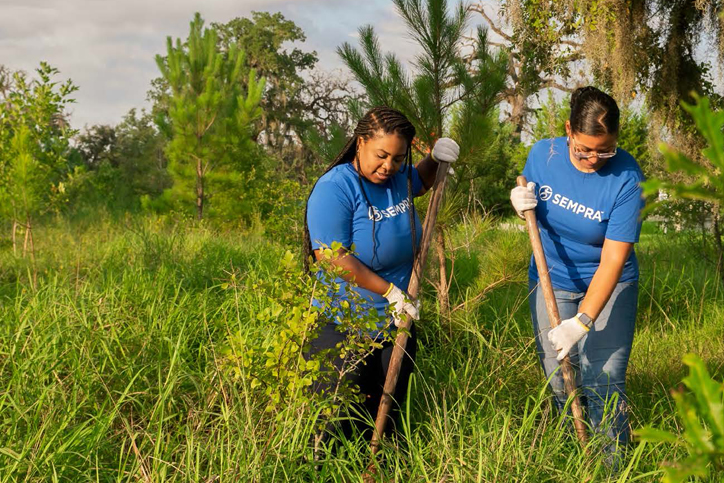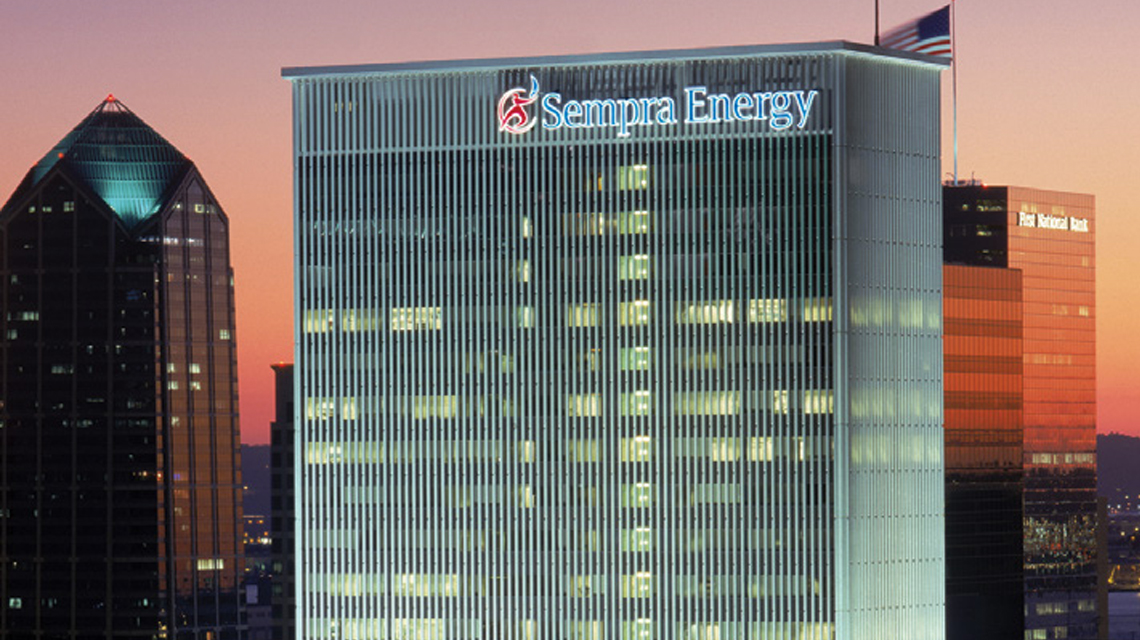
Sempra founded
Pacific Enterprises and Enova Corporation completed a $6.2 billion merger to create Sempra, an energy services company with one of the largest regulated utility customer bases in the United States. In 1998, Sempra’s 12,000 employees served approximately 21 million consumers across 27,000 square miles in Southern California. Today, more than 20,000 employees serve approximately 40 million consumers worldwide.
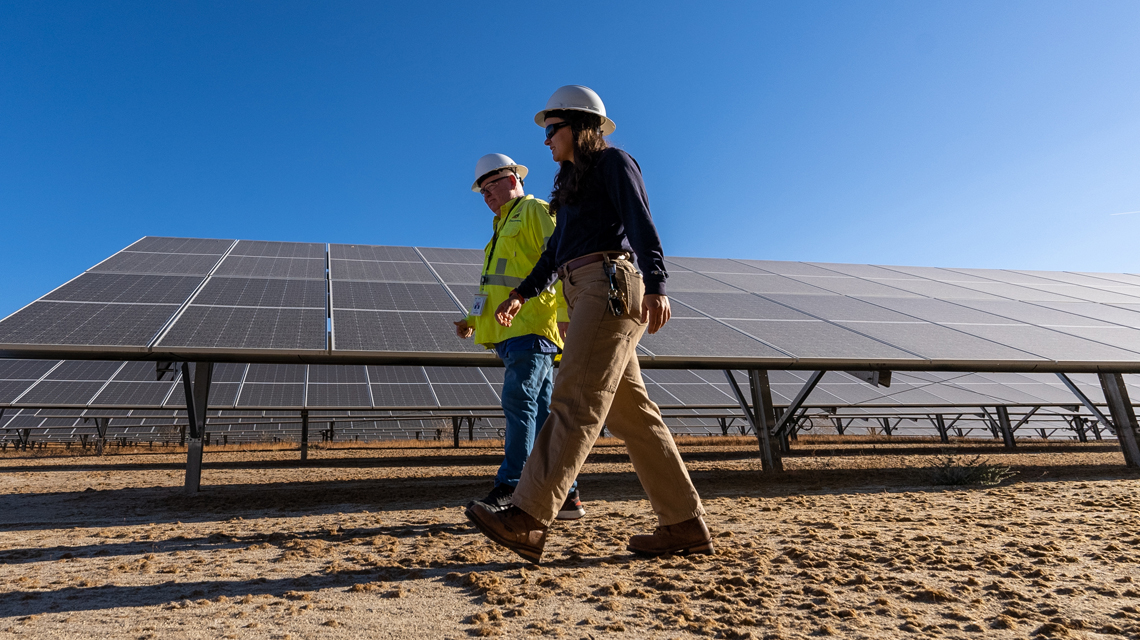
Renewables added to energy mix
In 2005, SDG&E added renewable energy to its resource mix, including solar energy, to accommodate growing regional energy needs.

Sempra Foundation created
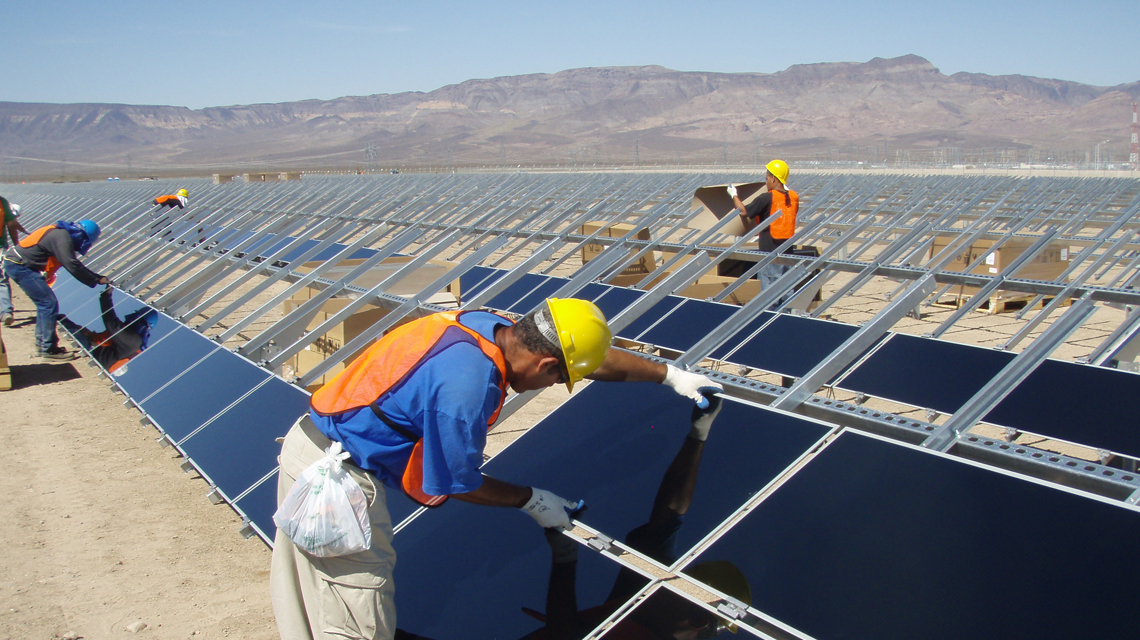
First renewable energy project completed
In 2008, Sempra completed its first renewable energy project, a 10-megawatt solar facility in Nevada, as a first step toward our renewable energy goals. At the time, this facility was potentially the largest thin-film solar installation in North America.
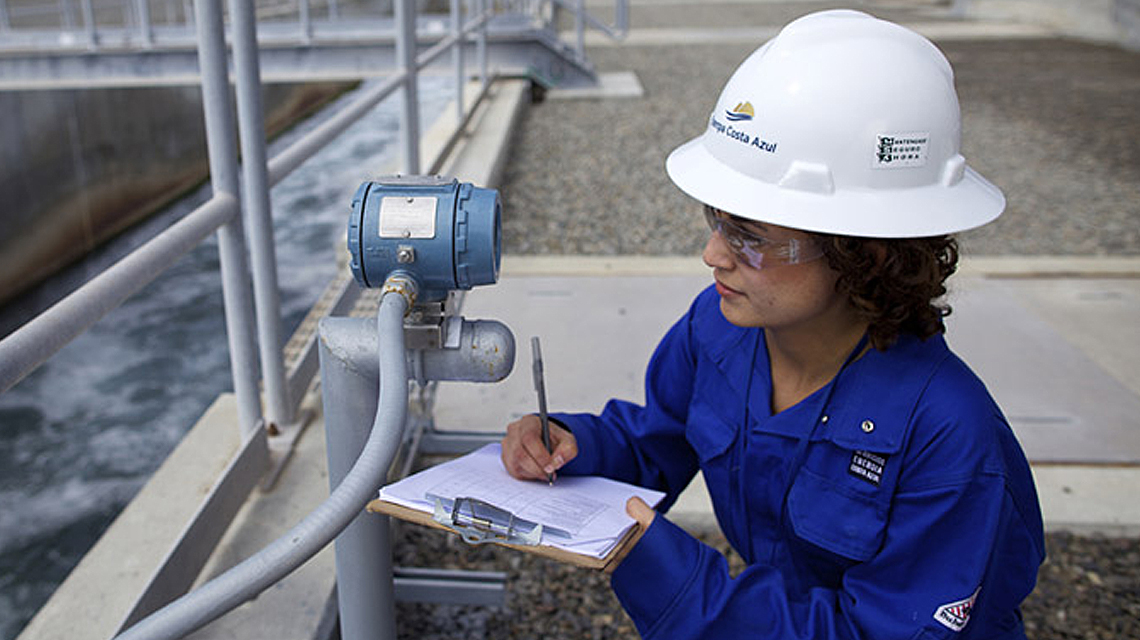
Energía Costa Azul began commercial operations
In May 2008, the Energía Costa Azul facility in Baja California began commercial operations, making it one of the first liquefied natural gas (LNG) receipt terminals on the west coast of North America. Located about 15 miles north of Ensenada, Mexico, the terminal can process up to one billion cubic feet of natural gas per day.
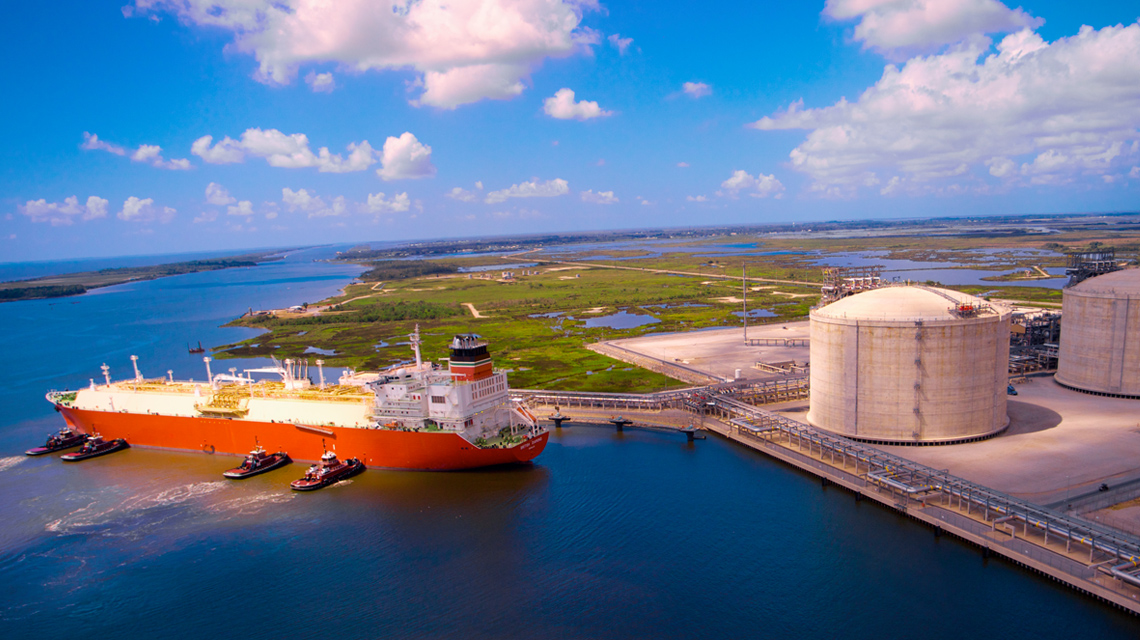
Cameron LNG began commercial operations
In July 2009, the Cameron LNG receipt terminal near Lake Charles, Louisiana, successfully completed performance testing and began commercial operations. Cameron LNG’s first cargo arrived aboard BP’s British Diamond, an LNG carrier bringing supplies from Trinidad.
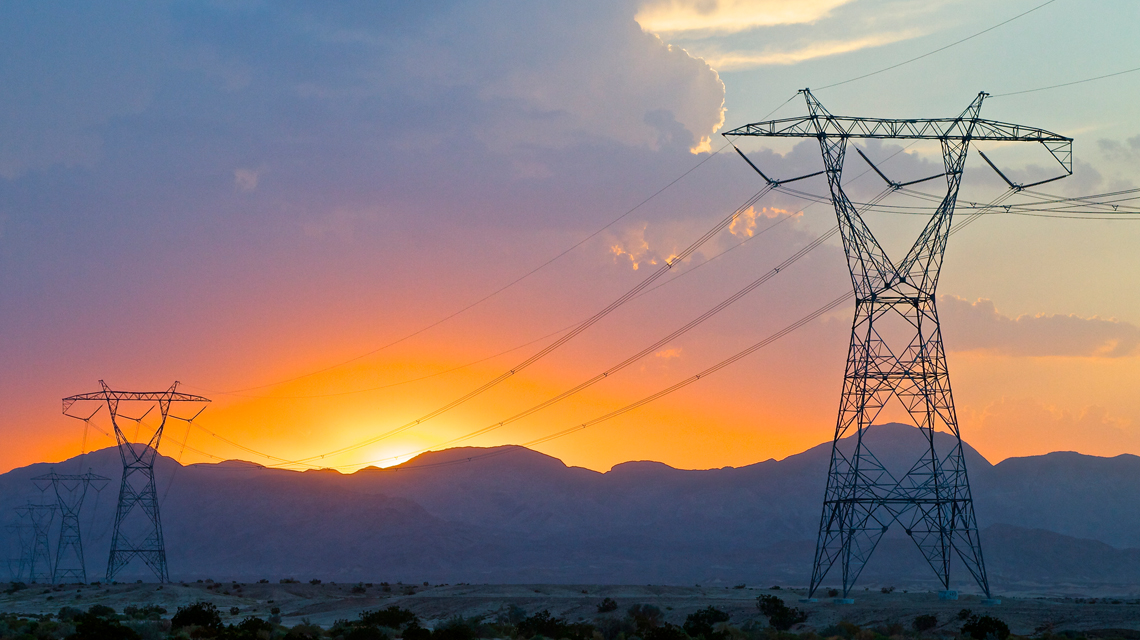
Sunrise Powerlink energized
In June 2012, SDG&E’s Sunrise Powerlink was completed and put into service. The 500,000-volt transmission line is capable of carrying enough power to serve 650,000 homes. The completion of the nearly $1.9 billion project culminated a five-year-long environmental review and permitting process, and 18 months of construction that encompassed both overhead and underground technology.
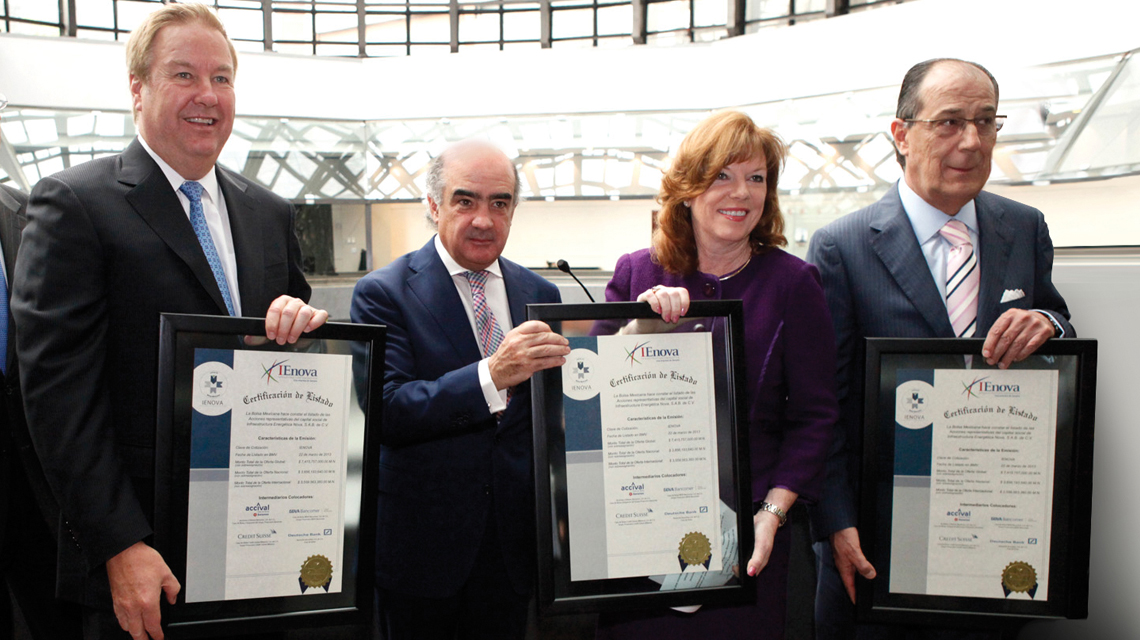
IEnova initial public offering
In March 2014, Sempra’s Mexican subsidiary, IEnova, executed its initial public offering (IPO). IEnova was one of the first private companies to invest in the energy sector in Mexico, following reforms at the time that opened the market for energy infrastructure development. IEnova’s assets included pipelines, natural gas distribution, LNG and other liquid fuels infrastructure, as well as wind and solar power generation facilities.
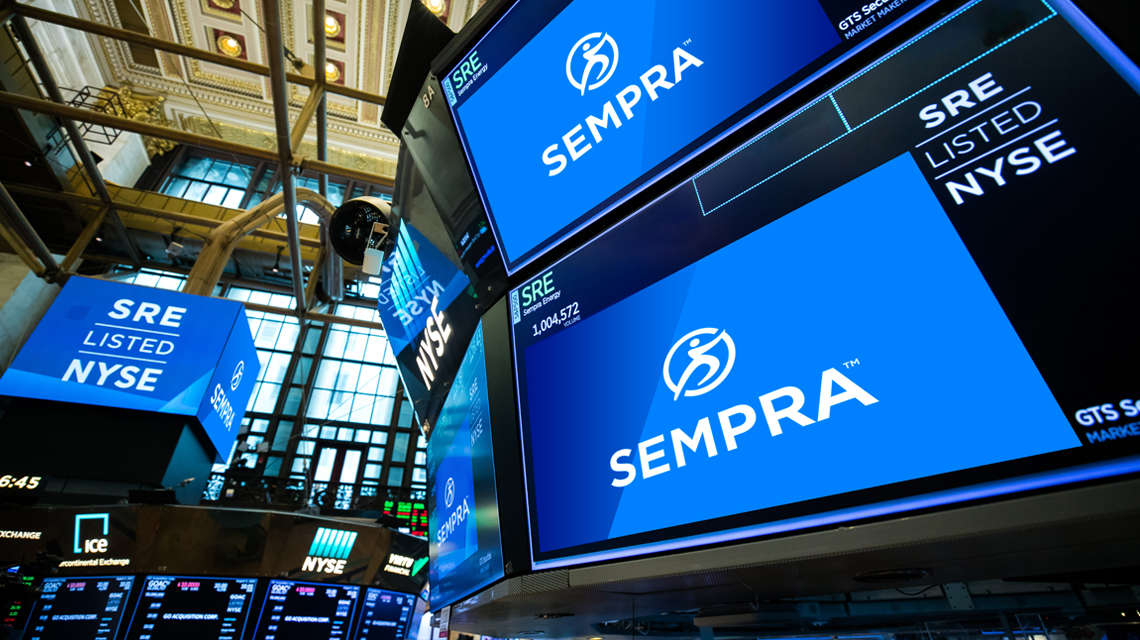
Sempra stock reached $100
On May 7, 2014, Sempra’s stock price reached $100 for the first time, closing at $100.41. This demonstrates the company’s long-term growth since the company was formed in June 1998 with a stock price of $28.56.
On August 3, 2023, Sempra announced that its Board of Directors declared a two-for-one split of its common stock to be effected in the form of a 100% stock dividend. Sempra’s current trading price reflects the 2-for-1 stock split.
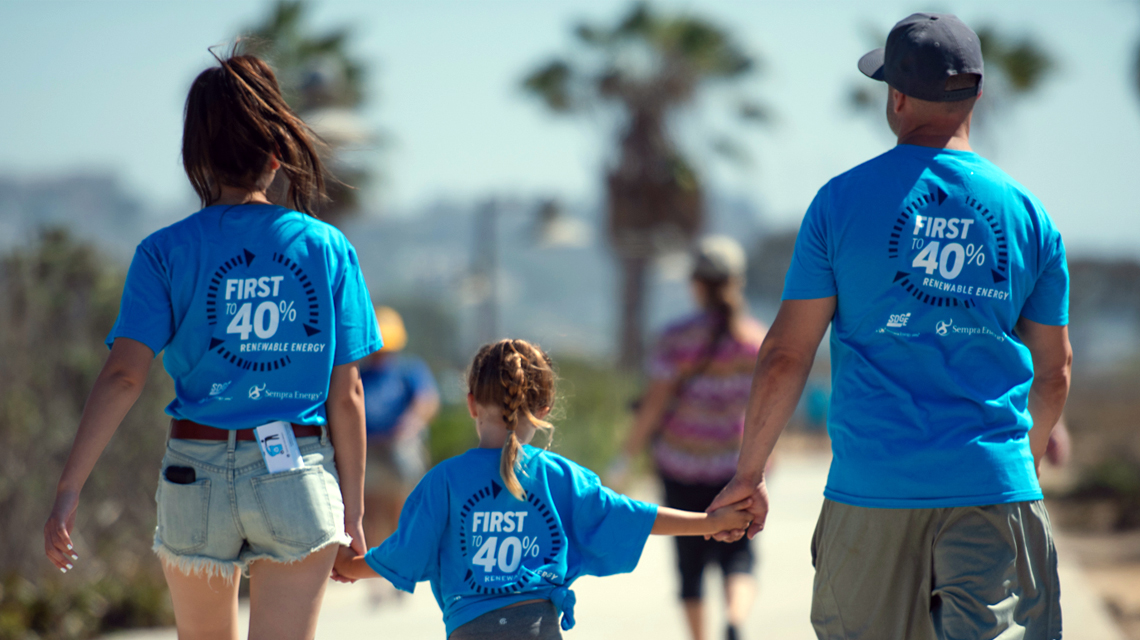
Renewable power milestone
In 2015, around 40% of the electricity SDG&E delivered to homes and businesses came from solar, wind and other renewable sources of energy.
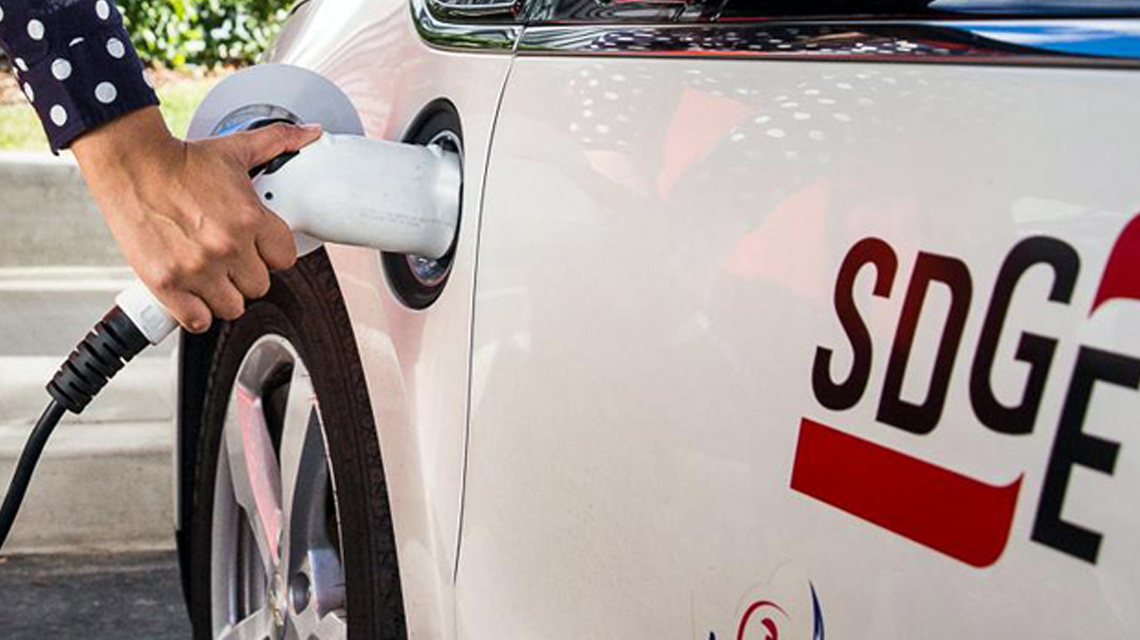
SDG&E received approval for EV pilot program
In January 2016, the California Public Utilities Commission (CPUC) approved SDG&E’s Electric Vehicle (EV) Grid-Integration pilot program to install thousands of EV charging stations at businesses and multi-family communities, including in underserved neighborhoods, throughout San Diego and south Orange counties.
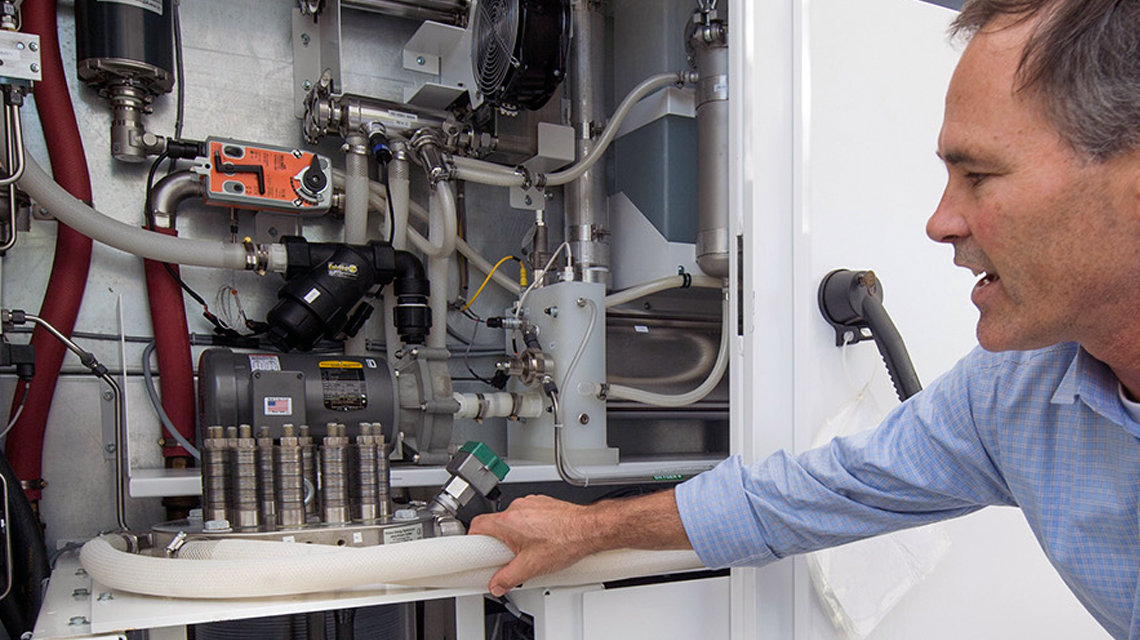
SoCalGas installed nation’s first power-to-gas project
In October 2017, SoCalGas installed the first power-to-gas project in the U.S. at the Department of Energy’s National Renewable Energy Lab in Golden, Colorado. Power-to-gas technology is a cutting-edge method of storing excess renewable energy. The project was the first of its kind in the United States, converting hydrogen generated from excess renewable power into pipeline-quality methane for use in homes, businesses and in transportation.

Lithium-ion battery energy storage facility unveiled
SDG&E unveiled a lithium-ion battery energy storage facility, which serves to enhance energy reliability and maximize renewable energy use. At the time, this was considered the world’s largest facility of its type, with the ability to store up to 120 megawatt hours of energy, the energy equivalent of serving 20,000 customers for four hours.
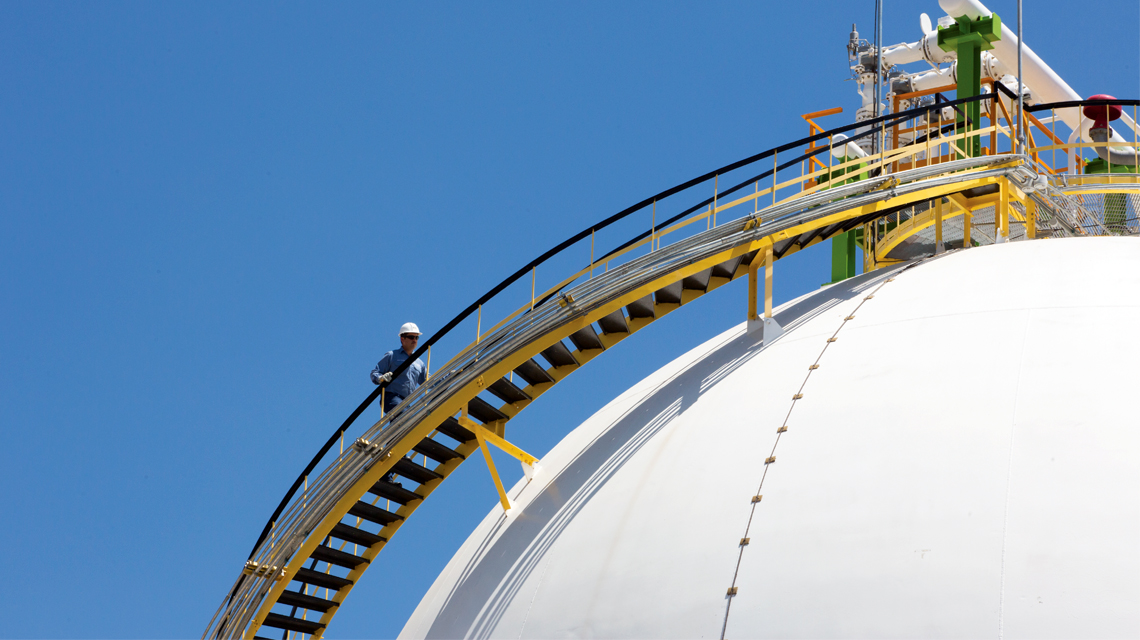
IEnova signed first liquid fuels contract
In August 2017, IEnova signed long-term contracts with a subsidiary of Valero Energy Corp. for the storage capacity of the liquid fuels marine terminal to be constructed in Veracruz, and two inland storage facilities to be constructed in Puebla and Mexico City. These facilities were IEnova's first venture in Mexico's emerging liquid fuels market.

SoCalGas RNG milestone
SoCalGas began using renewable natural gas (RNG) in its natural gas fueling stations as well as six additional fueling stations in the San Diego area.

Acquisition of a majority stake in Oncor
Sempra completed its $9.45 billion acquisition of Energy Future Holdings Corp. (EFH), including EFH's approximate 80% indirect ownership interest in Oncor Electric Delivery Company LLC, based in Dallas, Texas. The close of the transaction created a utility holding company with the largest U.S. customer base.
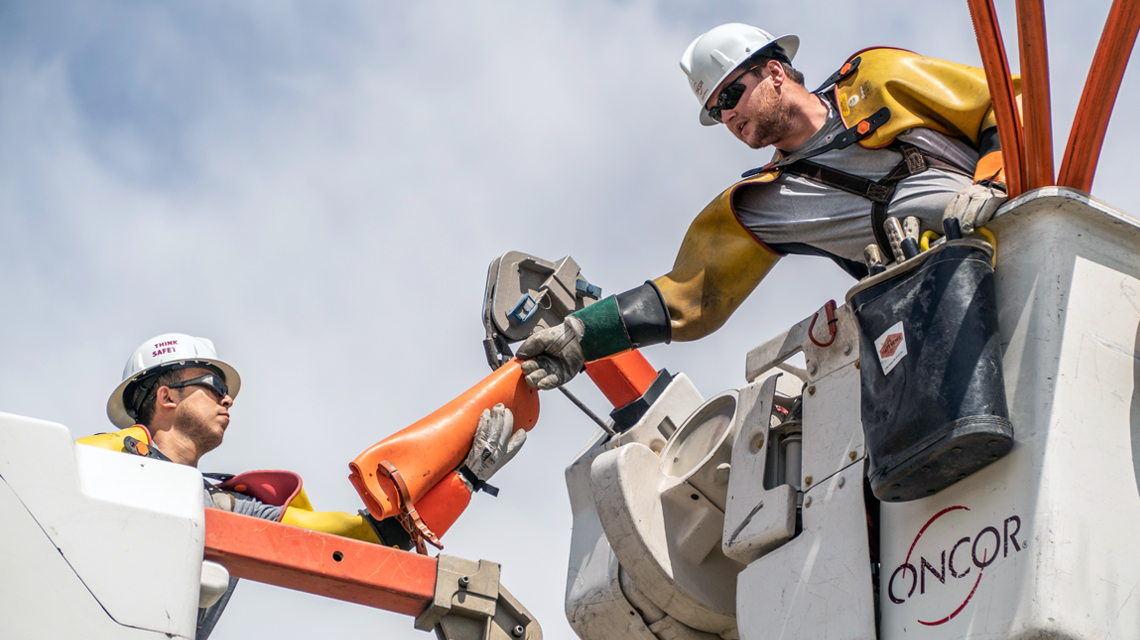
Oncor acquired InfraREIT and Sempra acquired an interest in Sharyland
In May 2019, Oncor Electric Delivery Company LLC acquired InfraREIT, and Sempra acquired an interest in Sharyland Utilities, LLC, further expanding the company’s presence in Texas.
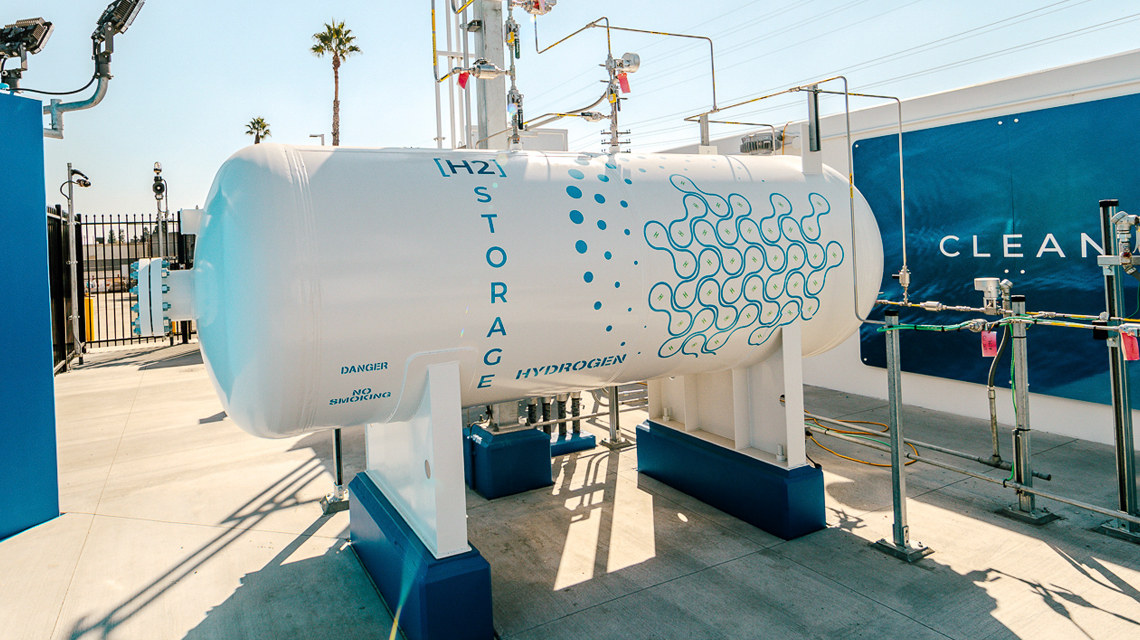
Hydrogen blending demonstration program launched
SoCalGas and SDG&E announced the groundbreaking creation of a hydrogen blending demonstration program to help reduce carbon emissions. The vision is to leverage surplus renewable electricity to produce green hydrogen for storage and use. This program was among the first of its kind in the nation.
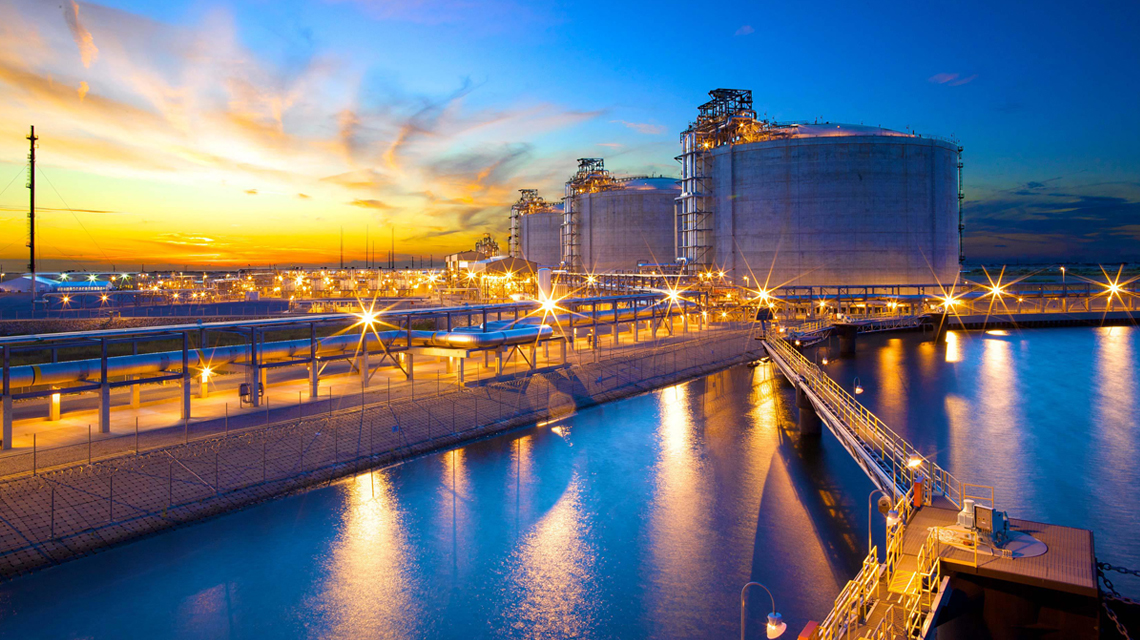
Cameron LNG began full commercial operations and Energía Costa Azul LNG reached final investment decision
Cameron LNG’s liquefaction export project in Hackberry, Louisiana reached full commercial operations in August 2020, enabling the export of approximately 12 million tonnes per annum of liquefied natural gas. Also in 2020, Energía Costa Azul’s liquefaction export project (ECA LNG) reached a final investment decision for the project in Baja California, Mexico. This was the only LNG facility in the world to reach final investment decision in 2020 as society grappled with a turbulent global pandemic.

Sustainable Financing Framework published
Sempra published its Sustainable Financing Framework, applicable to Sempra, SDG&E and SoCalGas, to establish parameters for financing projects aligned with our sustainability strategy. Eligible projects include clean transportation, climate change adaptation, energy efficiency, clean energy, socio-economic empowerment, green buildings, pollution prevention and more.

SDG&E completed the Cleveland National Forest fire hardening and safety project
In 2021, SDG&E completed its multi-year project to harden its infrastructure in the Cleveland National Forest. The project replaced more than 2,100 wood poles with fire-resistant steel poles, moved more than 17 miles of transmission and distribution lines underground and replaced 607 miles of conductor and equipment. This enhances the safety and reliability of the electric transmission and distribution system and is part of SDG&E’s extensive wildfire mitigation efforts.
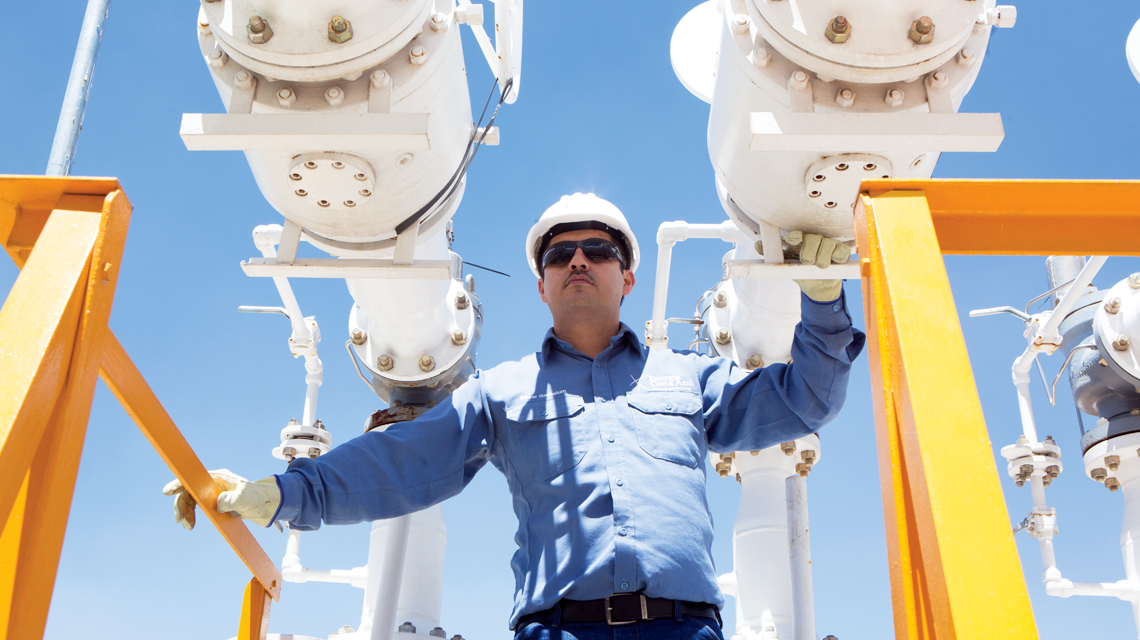
Formed Sempra Infrastructure
Focused on delivering energy for a better world, Sempra Infrastructure is connecting customers across the globe to cleaner energy technologies and modern infrastructure while advancing new technologies like carbon sequestration and clean hydrogen.
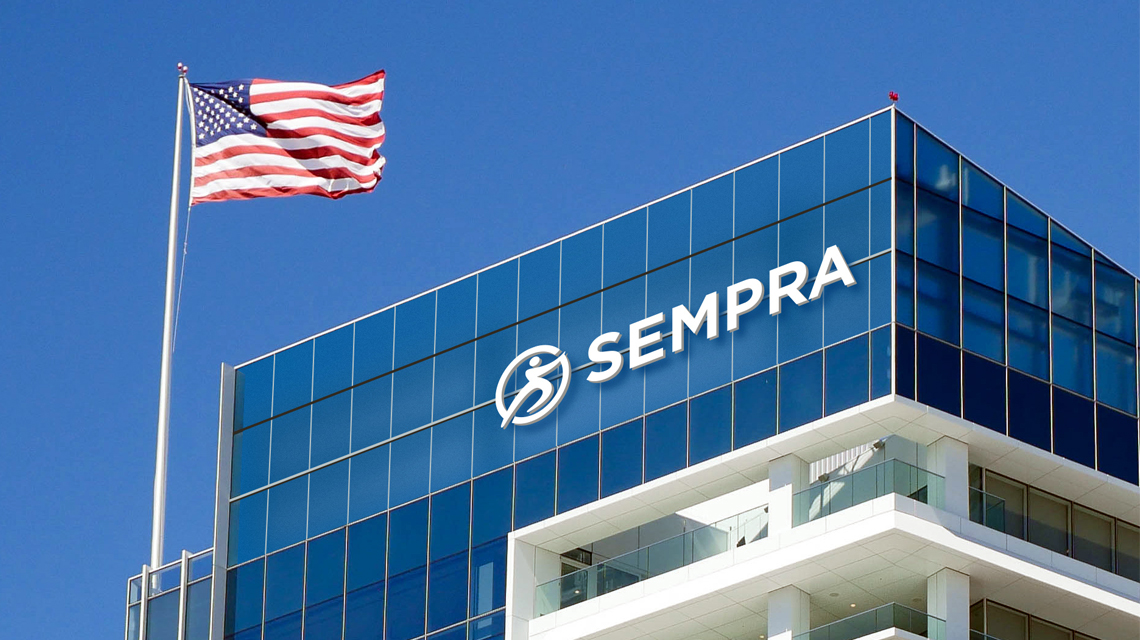
Brand modernization
Building on a solid brand foundation, we simplified our name, modernized our logo and updated our brand expression to amplify our presence in a digital-first era. Our fresh identity honors our history, reflects our commitment to serving others and defines our role in the world.
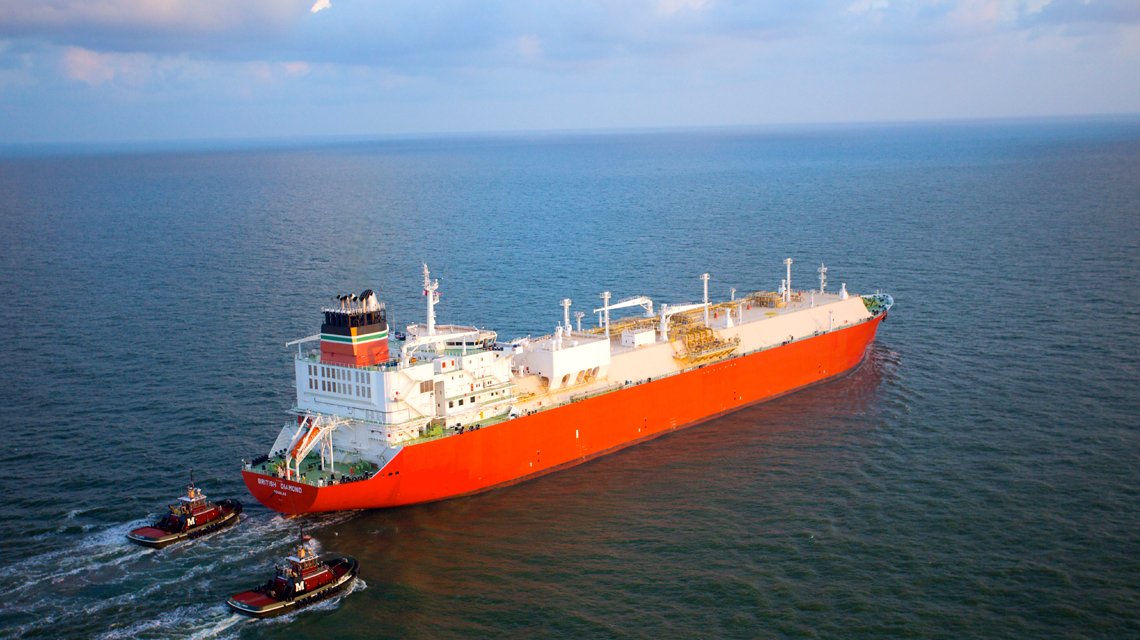
Partnerships formed to secure reliable energy
The Russian invasion of Ukraine created uncertainties around sources of energy for many countries around the world. To help stabilize the market and provide reliable energy, Sempra Infrastructure partnered with European energy companies to deliver LNG from the U.S. to Europe.
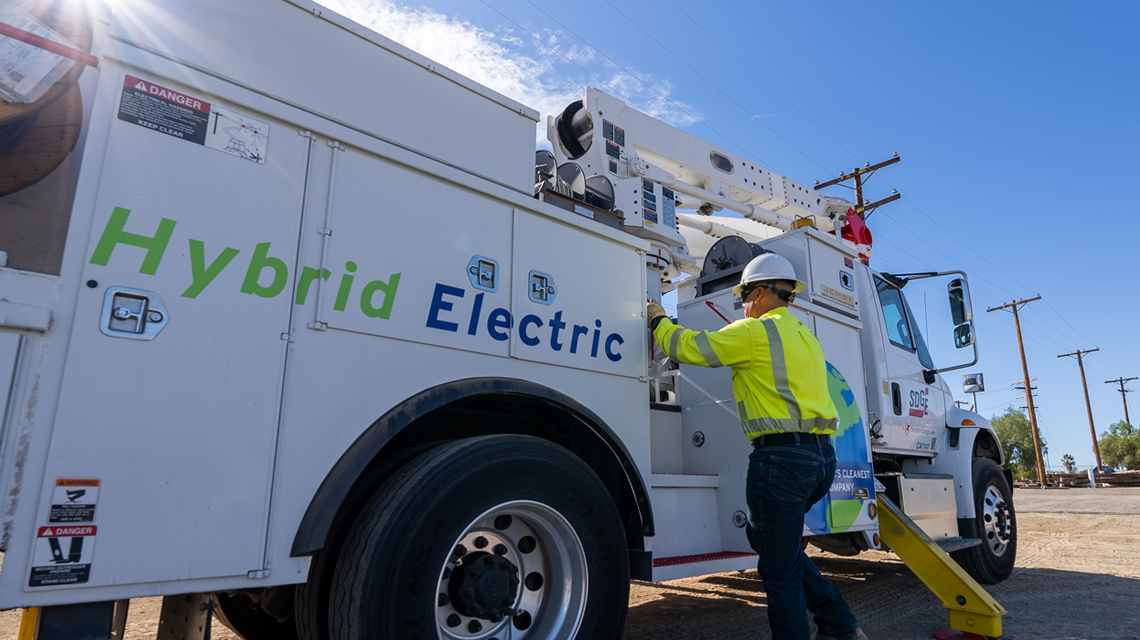
Fleet electrification milestone
SDG&E transitioned 20% of its fleet from fully gas-powered to electric and hybrid-electric vehicles. This milestone is part of SDG&E’s and California’s goals to reach net zero emissions by 2045.
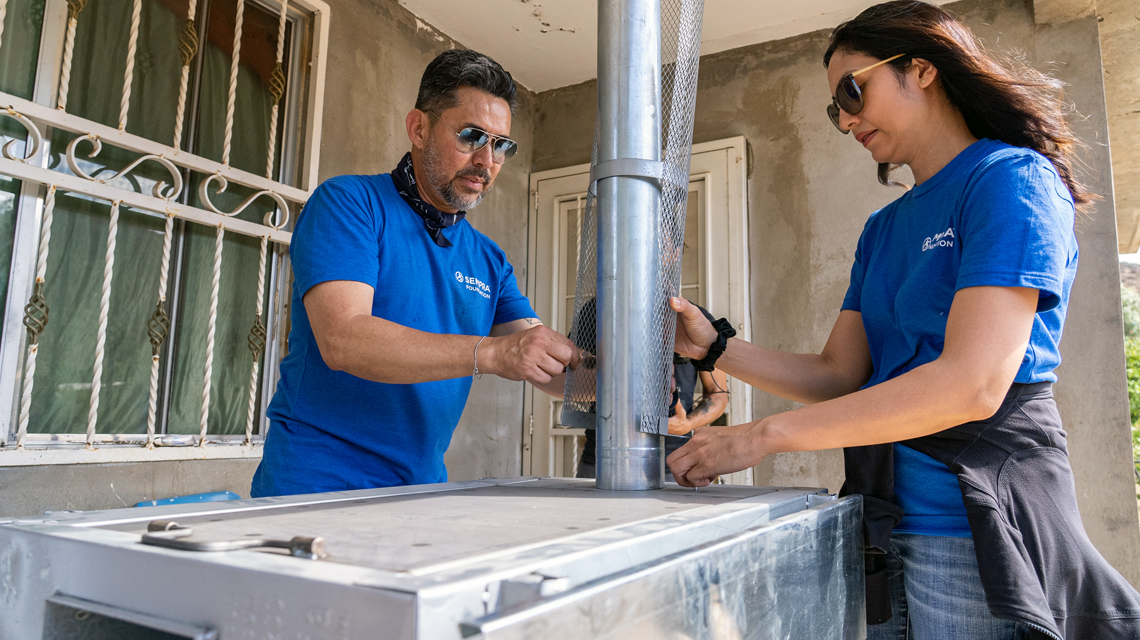
Sempra Foundation expanded energy access
Throughout the year, Sempra Foundation funded multiple projects to expand energy access in under-resourced communities in Mexico and along the U.S.-Mexico border. In late 2022, a group of Sempra employees volunteered their time to help deliver and assemble a biodigester and cleaner cookstoves in communities across Baja California, Mexico.
With the help of another nonprofit partner, the Foundation also provided solar photovoltaic systems to families in rural, unincorporated, underserved communities along the Texas-Mexico border. The affordable electricity provided by the solar panels makes it possible for the families to heat and cool food and water, study and complete schoolwork after dark, and more.
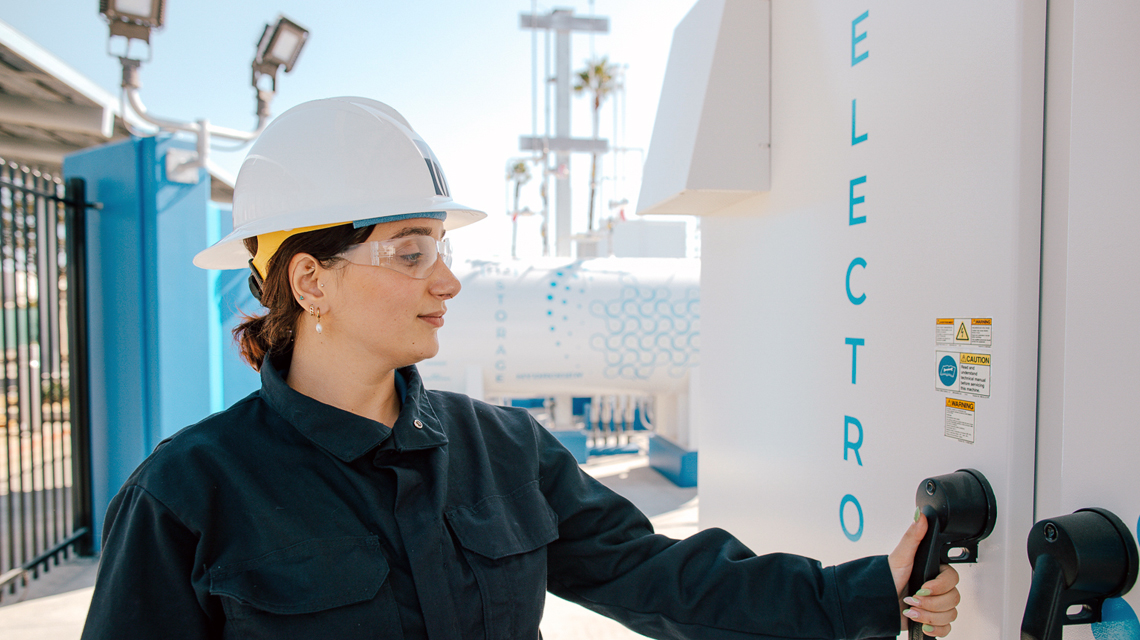
SoCalGas’ hydrogen innovations
SoCalGas unveiled the [H2] Innovation Experience, North America’s first-of-its-kind, clean, renewable hydrogen microgrid and home. The state-of-the-art project received Fast Company’s “World-Changing Ideas in North America” award. It is an important part of SoCalGas’ clean energy projects, which also include Angeles Link.
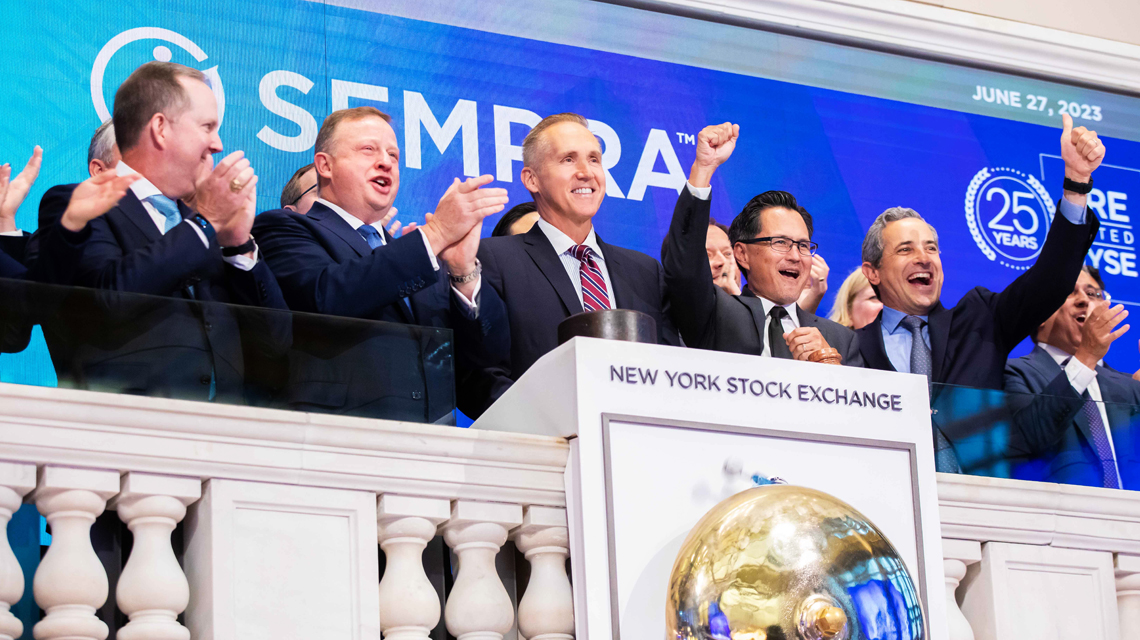
Sempra’s 25th anniversary
To commemorate Sempra’s 25th anniversary in June, members of the leadership team participated in the ringing of the New York Stock Exchange’s opening bell, initiating celebrations from coast to coast for 20,000 employees across the family of companies.
